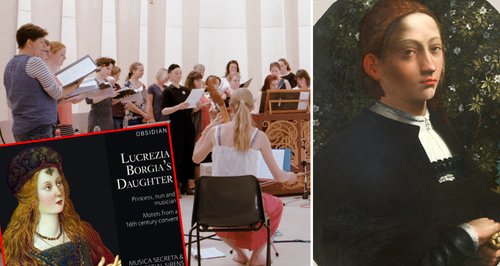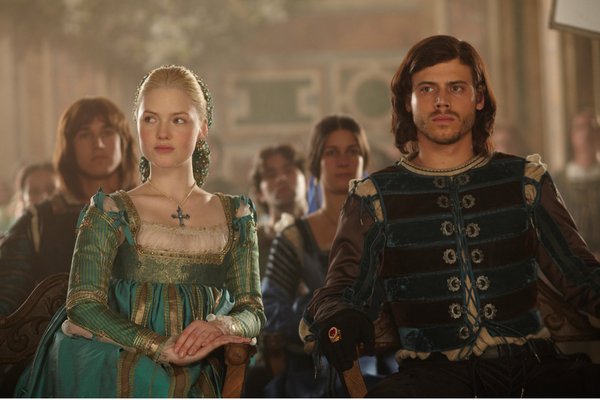On Air Now
Relaxing Evenings with Zeb Soanes 7pm - 10pm
8 March 2017, 09:59 | Updated: 22 August 2017, 12:43

Lucrezia Borgia belonged to one of the most famous families of the Renaissance: her father was Pope Alexander VI, her third husband was the Duke of Ferrara. And ever since her death in 1519 there have been rumours about her life, ranging from murder to infidelity and even incest. But until now, that hasn’t included a musical daughter.
Lucrezia Borgia’s life had become so notorious by the 19th century that Donizetti wrote an opera about her (including the more outlandish rumours about her life). And the more recent television series The Borgias (see below), starring Jeremy Irons, was inspired by the exploits of her family.

Picture: Showtime/REX/Shutterstock
And until now, that Donizetti opera was the extent of Lucrezia’s impact on the world of music. But now a new recording has been released exploring music written by her daughter, Suor Leonora d’Este, who lived from 1515-1575.
Professor Laurie Stras of Southampton University has spent six years researching the music, which would originally have been sung by Italian nuns in the 16th century. There are no known images of Leonora – the portrait above is believed to be of her mother, Lucrezia.
“Suor Leonora d’Este was a princess, a nun, and a musician,” says Professor Stras. “She left few clues to illuminate her history, for almost all her sixty years were spent enclosed in a convent, but a mysterious book of anonymous motets may at least help us understand her musical life: the Musica quinque vocum motetta materna lingua vocata, published in Venice by Girolamo Scotto in 1543.”
As a choral nun, Leonora would have spent more time singing than sleeping each day and, unlike the music performed by the all-male ducal and papal choirs, this music would have been familiar to people living in the 16th century:
“Ordinary citizens may never have heard the great ducal and Papal chapels, but they could listen to the nuns singing, every day, by entering the external church attached to every convent chapel,” explains Professor Stras.
The music is polyphonic (there’s more than one line of singing and the lines weave together). And according to Laurie the church of the time was very suspicious of this sort of singing by nuns, “saying that it was morally dangerous for nuns because it led to vanity, and for congregations because it was too seductive.”
It is pretty stunning, to be fair. On the new recording, the music is performed by an all-female ensemble, ranging from teenagers to women in their sixties which, as Professor Stras points out, is exactly how it would have been in Leonora’s day.
“It’s important to remember that nuns in the 16th century had more autonomy than women outside the cloister,” says Professor Stas. “Although they were contained in the convent, inside it they were doctors, they were writers, they were painters, they were musicians, they could do the sorts of things that women outside the convent couldn’t do.
“When Lucrezia Borgia’s daughter was orphaned at the age of four, she was raised in a convent because there was nobody at the court who could raise her. The convent was a place where she could do the things she wanted to and really excel at them.”
The new recording is out now on Obsidian Records and you can find out more here